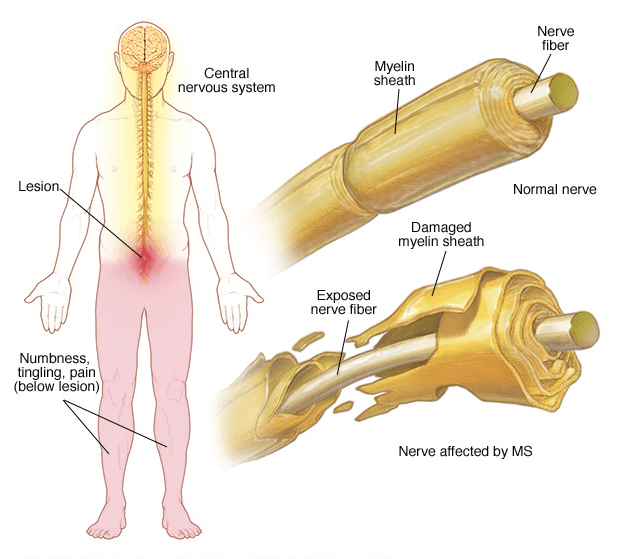Facts about Multiple Sclerosis
Multiple sclerosis (MS) is a potentially disabling disease of the brain and spinal cord (central nervous system).
In MS, the immune system attacks the protective sheath (myelin) that covers nerve fibers and causes communication problems between your brain and the rest of your body. Eventually, the disease can cause the nerves themselves to deteriorate or become permanently damaged.
Signs and symptoms of MS vary widely and depend on the amount of nerve damage and which nerves are affected. Some people with severe MS may lose the ability to walk independently or at all, while others may experience long periods of remission without any new symptoms.
There’s no cure for multiple sclerosis. However, treatments can help speed recovery from attacks, modify the course of the disease and manage symptoms.
Symptoms

Multiple sclerosis signs and symptoms may differ greatly from person to person and over the course of the disease depending on the location of affected nerve fibers. They may include:
- Numbness or weakness in one or more limbs that typically occurs on one side of your body at a time, or the legs and trunk.
- Partial or complete loss of vision, usually in one eye at a time, often with pain during eye movement.
- Prolonged double vision.
- Tingling or pain in parts of your body.
- Electric-shock sensations that occur with certain neck movements, especially bending the neck forward.
- Tremor, lack of coordination or unsteady gait.
- Slurred speech
- Fatigue.
- Dizziness
- Problems with bowel and bladder function.



